Welcome to our comprehensive guide on the best walleye lakes in Wisconsin! As an avid angler or someone eager to explore Wisconsin’s abundant fishing opportunities, you’ve come to the right place. Wisconsin boasts a diverse range of lakes, rivers, and estuaries that offer prime habitats for walleye fishing. In this blog post, we will take you on a journey through some of the top walleye fishing destinations in the state, highlighting their unique features, fishing techniques, and other valuable insights. Whether you’re seeking trophy-sized catches or simply enjoy the thrill of reeling in walleye, let’s dive in and discover the best lakes Wisconsin has to offer!

Map of the Best Lakes to Catch Walleye in Wisconsin
14 Best Walleye Lakes in Wisconsin
Green Bay of Lake Michigan
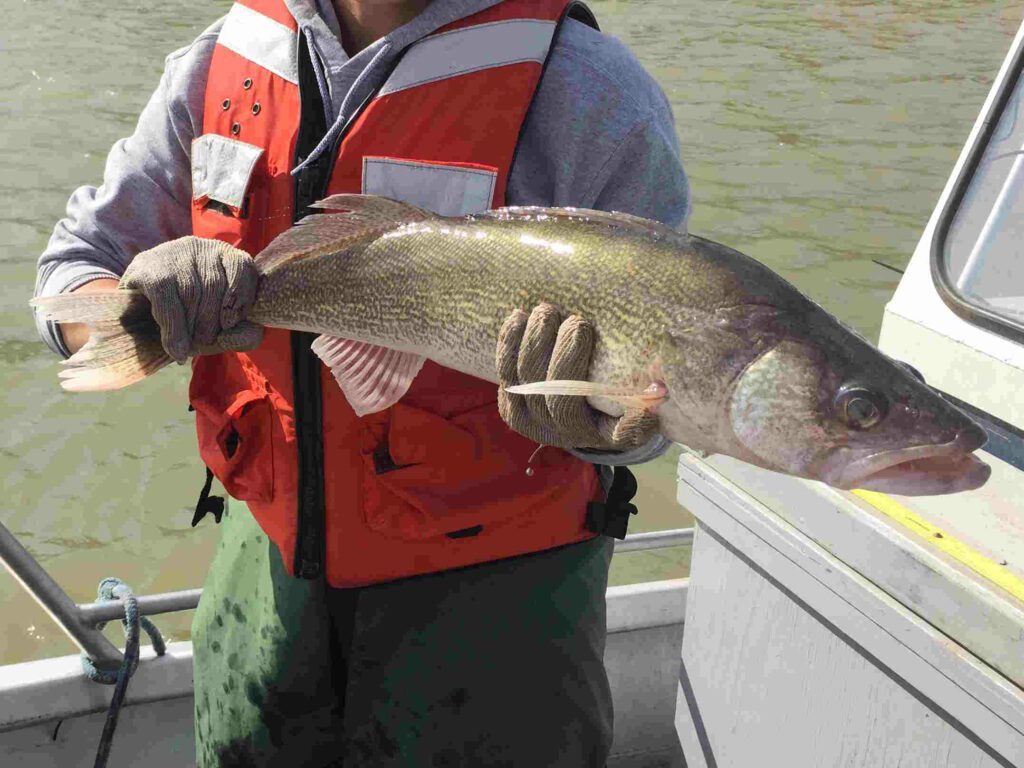
Of course I’m partial to Green Bay as being the best place to fish for Walleye in Wisconsin. These are my personal fishing waters, as they lie along the western shore of Door County. Speaking of which, Door County is a great place to make your home base for a walleye fishing trip to Green Bay.
When it comes to prime walleye fishing spots in Wisconsin, Green Bay and its connection to Lake Michigan definitely top the list. Green Bay, which is essentially an extension of Lake Michigan, spans an impressive 1,625 square miles, stretching about 120 miles in length. Its width varies from approximately 10 to 20 miles, offering ample room for anglers to explore its vast waters.
With depths reaching up to 174 feet, Green Bay provides an ideal habitat for walleye. The fishing season kicks off early in the year, with avid anglers casting their lines as soon as the ice melts off in March. The tributaries of Green Bay, including the Fox River, Oconto River, and Menominee River, offer excellent early-season fishing opportunities as the walleye start moving from the deeper waters to the shallower areas.
As the rivers warm up, the walleye begin their migration into the deeper sections of Green Bay. This transition period presents a prime window for anglers to target walleye in their seasonal movement. The abundance of forage fish, such as perch, whitefish, shad, and gobies, contributes to the healthy ecosystem of Green Bay. These forage fish provide a substantial food source, supporting the growth and vitality of walleye populations in the region.
It’s worth noting that Green Bay holds a significant distinction as the world’s largest freshwater estuary. This unique ecosystem blends the characteristics of a river and a bay, creating an environment that supports diverse aquatic life, including walleye. The convergence of freshwater rivers and the vast expanse of Lake Michigan creates an exceptional walleye fishing experience that is difficult to match.
Whether you’re an early-season angler targeting walleye in the tributaries or venturing out into the deeper waters of Green Bay, this renowned fishing destination offers a wealth of opportunities to reel in some impressive catches. The combination of its expansive size, varied depths, and ample food sources make Green Bay a must-visit location for any walleye fishing enthusiast.
Long Lake
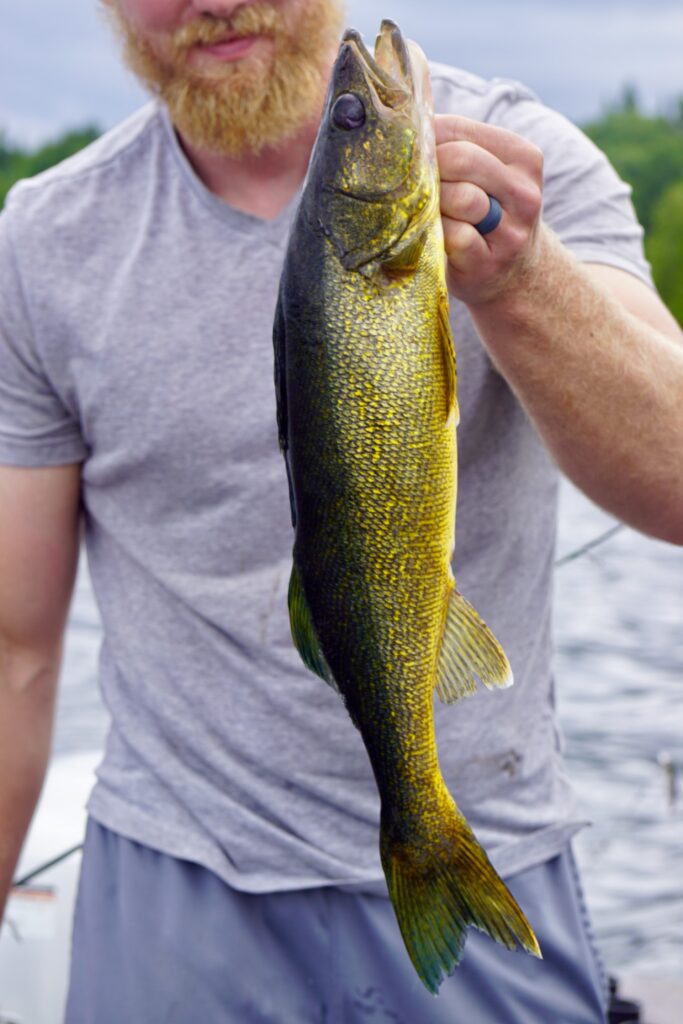
Situated in Washburn County, Long Lake holds the distinguished title of being the walleye capital of Wisconsin. This picturesque lake, located within the scenic surroundings of Washburn County, spans an area of approximately 37.76 square miles. With a maximum depth of 74 feet, Long Lake offers both depth and breadth for anglers seeking the thrill of walleye fishing.
One of the standout features of Long Lake is its crystal-clear waters, which add to the allure of the fishing experience. The clarity of the lake provides not only a visually stunning backdrop but also enhances the chances of spotting elusive walleye swimming beneath the surface. This makes it easier for anglers to target these prized fish and increase their chances of success.
In 2023, Long Lake received a special honor when Governor Tony Evers caught a walleye here as part of the Governor’s Fishing Opener. This event served as a testament to the abundance and quality of walleye fishing opportunities that Long Lake offers. It showcased the lake’s significance as a prime destination for both recreational anglers and esteemed figures alike.
With its reputation as the walleye capital of Wisconsin, Long Lake remains a favored spot for anglers seeking the thrill of catching these prized fish. Its scenic beauty, clear waters, and impressive size contribute to an unforgettable fishing experience. Whether you’re an experienced angler or a novice looking to test your skills, Long Lake provides a perfect setting to cast your line and reel in some impressive walleye.
Lake Winnebago

Lake Winnebago, the largest lake entirely within the state of Wisconsin, offers anglers a remarkable walleye fishing experience. With its expansive size spanning approximately 300 square miles, this freshwater gem provides ample opportunities for anglers to test their skills and reel in some impressive catches.
Situated as part of the Fox River system, Lake Winnebago holds a prominent position in Wisconsin’s fishing landscape. The lake boasts a maximum depth of 21 feet, which, although relatively shallow compared to other lakes, does not hinder its reputation as a walleye hotspot. In fact, this moderate depth contributes to the unique dynamics of the lake and provides favorable conditions for walleye to thrive.
Lake Winnebago is known for its lower water clarity compared to some other lakes in the region. While the visibility may not be as crystal clear as other bodies of water, this characteristic does not deter anglers from enjoying a successful day on the lake. The walleye population in Lake Winnebago is naturally self-sustaining, meaning that the population does not rely on stocking efforts. This self-sustaining system speaks to the lake’s ability to provide a thriving habitat and ample food sources necessary for walleye to flourish.
Anglers who visit Lake Winnebago can enjoy the thrill of catching walleye in a naturally balanced ecosystem. The absence of heavy reliance on stocking programs ensures that the walleye population in the lake remains self-sufficient and resilient. This natural balance adds an extra layer of authenticity to the fishing experience, allowing anglers to connect with the lake’s ecosystem on a deeper level.
Lake Winnebago’s status as the largest lake entirely within Wisconsin, its integral role in the Fox River system, and its ability to sustain a healthy walleye population make it a top destination for anglers seeking the excitement of walleye fishing. Despite its lower water clarity, this expansive lake continues to attract fishing enthusiasts from near and far, offering a rewarding and authentic fishing experience that celebrates the natural dynamics of the walleye population.
Lake Mendota
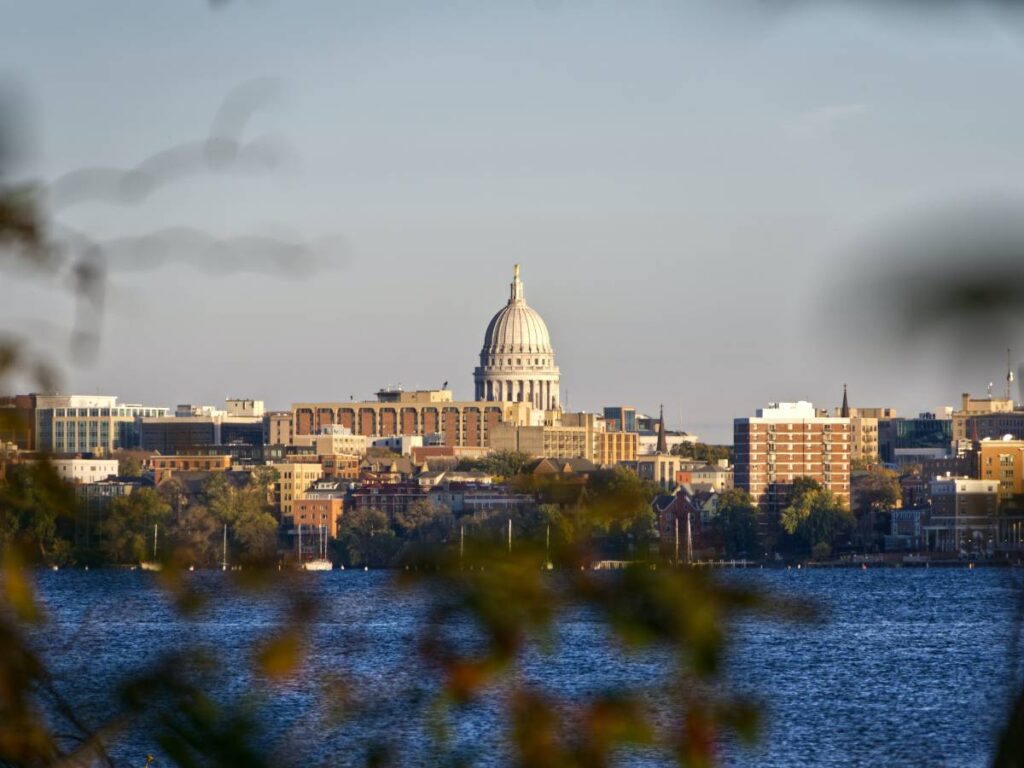
Lake Mendota, located in Dane County, stands as one of the two lakes flanking the isthmus in Madison. Despite its relatively smaller size, spanning approximately 15 square miles, Lake Mendota offers a rich walleye fishing experience for anglers in the region.
With a maximum depth of 83 feet and an average depth of 44 feet, Lake Mendota provides a diverse range of habitats for walleye to inhabit. These varying depths offer ample opportunities for anglers to explore and locate their preferred fishing spots, whether it’s closer to the surface or in the deeper sections of the lake.
One notable aspect of Lake Mendota is its stocking program, which heavily contributes to the walleye population in the lake. To maintain a sustainable fishery, size and creel limits are in place to ensure responsible angling practices and protect the long-term health of the walleye population. These limits help maintain a balanced ecosystem and ensure that anglers have continued opportunities to enjoy walleye fishing in Lake Mendota.
Despite its smaller size compared to other lakes in Wisconsin, Lake Mendota’s strategic location near the capital city of Madison makes it a popular choice for local anglers and visitors alike. The combination of its proximity to urban amenities and its vibrant walleye fishery makes it a convenient and rewarding destination for a day of fishing.
Whether you’re casting your line from a boat or enjoying the serene shoreline, Lake Mendota offers a prime location to target walleye. Its stocking efforts, size limits, and unique position within Dane County contribute to a thriving walleye fishery, ensuring that anglers have a memorable and fulfilling fishing experience on this charming lake.
Green Lake
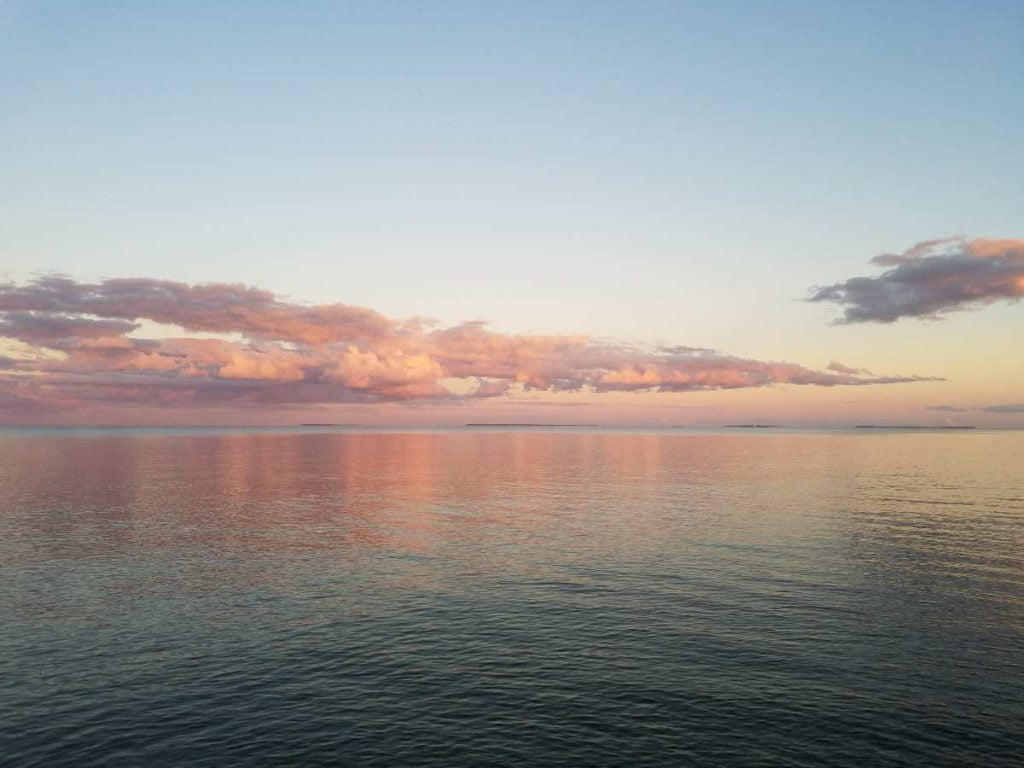
Green Lake, found in Green Lake County, is a hidden gem for walleye fishing enthusiasts. Despite its modest size of 1.88 square miles, this captivating lake offers a wealth of angling opportunities and a reputation for producing particularly large walleye.
With a maximum depth of 236 feet and an average depth of 104 feet, Green Lake provides a diverse range of habitats for walleye to thrive. The lake’s depth variations contribute to the presence of ample forage fish, which serve as a vital food source for walleye. This abundance of prey contributes to the growth and size of the walleye population, making Green Lake a prime destination for those seeking trophy-sized catches.
While Green Lake is known for its remarkable walleye fishing, it offers more than just that. The lake is also great for panfishing, providing anglers with additional opportunities to reel in a variety of other species. Whether you’re targeting walleye or exploring the panfishing potential, Green Lake offers a diverse and exciting angling experience.
Fishing on Green Lake can be challenging due to the lake’s size and depth, as well as the skill required to entice the elusive walleye. However, the rewards are well worth the effort. The thrill of landing a particularly large walleye or enjoying a successful day of panfishing amidst the scenic beauty of Green Lake is an experience that anglers cherish.
If you’re up for a challenge and seeking the possibility of catching impressive walleye, Green Lake is the place to be. Its unique combination of size, depth, and abundant forage fish sets the stage for a remarkable angling adventure. Whether you’re a seasoned angler looking for a challenge or a nature enthusiast seeking to connect with the stunning surroundings, Green Lake offers an enticing opportunity for a rewarding fishing experience.
Lake Chippewa

Lake Chippewa, tucked away in the picturesque Sawyer County, is a haven for walleye fishing enthusiasts. Spanning approximately 23 square miles, this stunning lake offers a remarkable fishing experience with its abundant walleye population.
The Wisconsin Department of Natural Resources (WI DNR) lists walleye as “abundant” in Lake Chippewa, indicating a healthy and thriving population. Anglers can expect ample opportunities to reel in walleye throughout the year, making this lake a prime destination for fishing enthusiasts.
With a maximum depth of 92 feet and an average depth of 15 feet, Lake Chippewa provides a diverse range of habitats for walleye to inhabit. The lake’s varied depths contribute to the walleye’s ability to find suitable environments for feeding and spawning, ensuring a sustainable population.
Lake Chippewa is not only renowned for its walleye fishing but also for its muskellunge population. This exciting sport fish adds to the diversity of the angling experience on the lake, attracting those seeking the thrill of pursuing the elusive muskie.
One of the remarkable features of Lake Chippewa is its wilderness-like setting, surrounded by beautiful scenery. The tranquil and serene atmosphere adds to the overall experience, allowing anglers to immerse themselves in nature while casting their lines.
According to the WI DNR, Lake Chippewa boasts an impressive average of 4.8 adult walleye per acre, indicating a healthy and vibrant fishery. May is considered the best time to fish this lake, although productive fishing can be enjoyed year-round. During May, the walleye are particularly active, presenting a prime opportunity to target these sought-after fish.
Whether you choose to explore the bountiful walleye population, engage in the pursuit of muskellunge, or simply revel in the captivating surroundings, Lake Chippewa offers a fulfilling fishing experience. Its abundant fish populations, scenic beauty, and year-round productivity make it an enticing destination for anglers seeking a memorable adventure in the heart of nature.
Lake Wisconsin

Lake Wisconsin, located in Sauk and Columbia Counties, offers a diverse and accessible walleye fishing experience just 30 miles from Madison. Spanning approximately 21 square miles, this picturesque lake provides a range of angling opportunities for both locals and visitors alike.
With a maximum depth of 24 feet, Lake Wisconsin offers a unique fishing environment for walleye enthusiasts. The Wisconsin Department of Natural Resources lists walleye as “common” in the lake, indicating a stable population that anglers can target throughout the year.
Lake Wisconsin’s fishing season provides excellent opportunities during the early and late seasons. However, October and November are particularly known for their productivity, as fish are actively seeking to fatten up for the upcoming winter months. This period presents a prime time to target walleye and increase your chances of success.
When fishing for walleye and saugers in Lake Wisconsin, the areas near the ferry and bridge crossings at both the Merrimac side to the north and the Lodi side to the south are highly recommended. Anglers should keep an eye out for baitfish or forage schools just off the old river channel, typically found in water depths ranging from 15 to 20 feet, and sometimes even shallower.
The combination of accessible locations and strategic fishing techniques allows anglers to optimize their chances of encountering walleye in Lake Wisconsin. Whether you’re a seasoned angler or a beginner looking to try your hand at walleye fishing, the lake’s diverse fishing spots offer ample opportunities for a fulfilling angling experience.
Lake Wisconsin’s proximity to Madison, its favorable fishing conditions in the early and late seasons, and its reputation as a walleye fishery make it a popular choice among local anglers. Whether you’re casting your line from a boat or enjoying the shoreline, Lake Wisconsin provides an accessible and rewarding fishing experience for those seeking to reel in walleye amidst the serene beauty of the surrounding area.
Lake Koshkonong
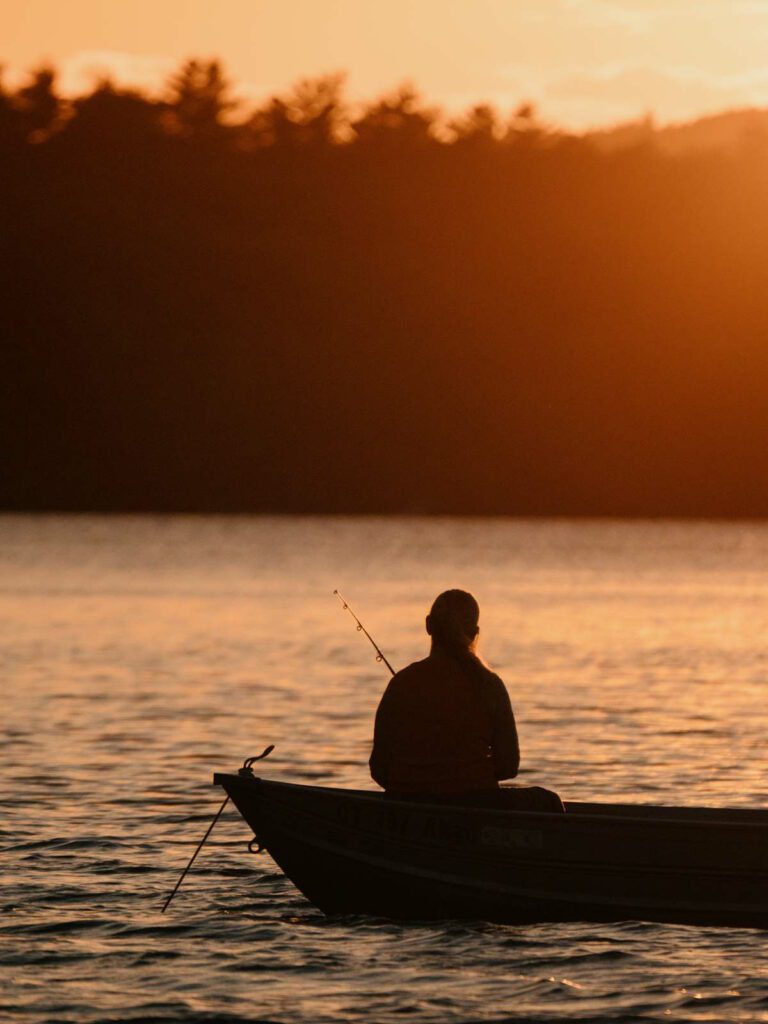
Lake Koshkonong, primarily located in Dane County, may be relatively small in size, spanning approximately 16 square miles, but it offers a unique and rewarding walleye fishing experience. One notable characteristic of Lake Koshkonong is its extremely shallow nature, with a maximum depth of only 7 feet.
The Wisconsin Department of Natural Resources (DNR) heavily stocks Lake Koshkonong with walleye, ensuring a thriving population and increasing anglers’ chances of success. This stocking effort contributes to the lake’s reputation as a prime destination for walleye fishing.
While Lake Koshkonong provides ample fishing opportunities, anglers should be prepared for challenges, particularly during the mid-summer season. As water clarity decreases and temperatures rise, fishing can become more challenging. However, despite these difficulties, when Lake Koshkonong is productive, it can be exceptionally fruitful for walleye anglers.
The key to a successful fishing outing on Lake Koshkonong lies in understanding its unique dynamics and adapting fishing techniques accordingly. Monitoring water clarity and temperature, as well as adjusting bait presentation and location, can significantly improve anglers’ chances of hooking into walleye during their visit.
When Lake Koshkonong is in its productive phase, anglers can expect exciting action and rewarding catches. The shallow nature of the lake contributes to a unique fishing experience, requiring anglers to navigate the intricacies of the environment to locate walleye hotspots.
Despite the challenges that may arise during certain seasons, the potential rewards on Lake Koshkonong make it a worthwhile destination for walleye enthusiasts. Whether you’re an experienced angler looking for a new adventure or a beginner hoping to land your first walleye, Lake Koshkonong offers a distinct fishing experience that showcases the resilience and adaptability of anglers in pursuit of their desired catch.
Rock Lake
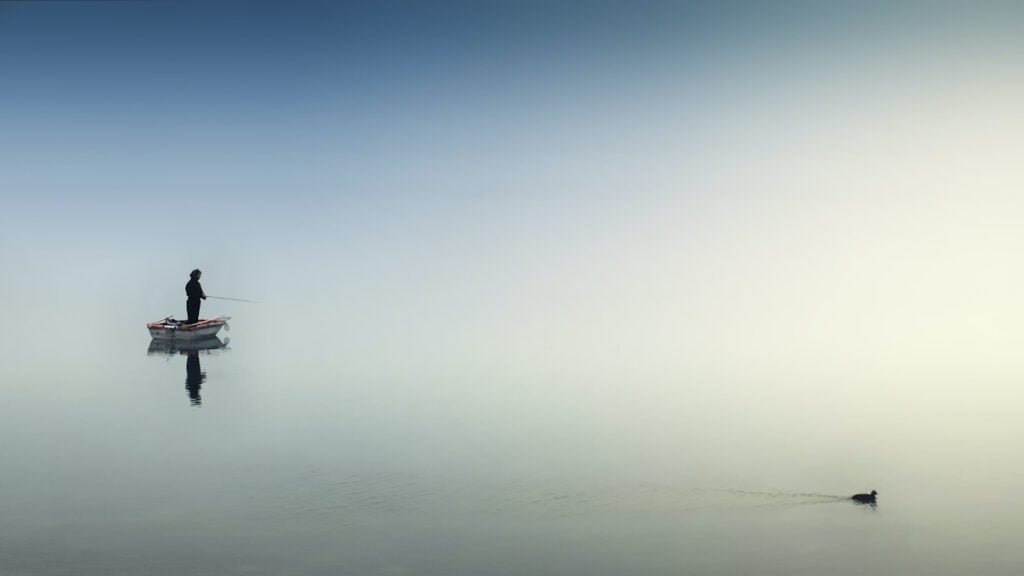
In Jefferson County, Rock Lake is a small yet captivating destination for walleye fishing enthusiasts. Spanning approximately 2 square miles, this picturesque lake offers a unique angling experience with its diverse fish population, including the common walleye.
With a maximum depth of 60 feet and an average depth of 16 feet, Rock Lake provides a varied underwater landscape that supports a healthy walleye population. These depths offer suitable habitats for walleye to thrive, presenting anglers with opportunities to target this prized species.
Rock Lake’s reputation as a walleye fishery attracts local anglers and visitors alike. Whether you’re casting your line from a boat or enjoying the shoreline, the lake’s serene atmosphere and scenic surroundings add to the overall fishing experience.
Anglers exploring Rock Lake for walleye can employ a variety of fishing techniques to increase their chances of success. From trolling along drop-offs to casting near submerged structures, there are several strategies to entice walleye to bite. Experimenting with different lures, bait presentations, and fishing depths can help unlock the lake’s potential and maximize your fishing opportunities.
Rock Lake’s smaller size and accessible location make it a convenient choice for anglers looking for a quick fishing getaway. Its proximity to Jefferson County offers additional attractions and amenities, allowing visitors to enjoy a well-rounded experience both on and off the water.
Whether you’re an experienced angler seeking a new fishing challenge or a novice looking to enjoy the tranquility of a smaller lake, Rock Lake provides an enjoyable walleye fishing experience. Its common walleye population, scenic beauty, and convenient location make it a captivating destination for anglers seeking to reel in some memorable catches.
Trout Lake
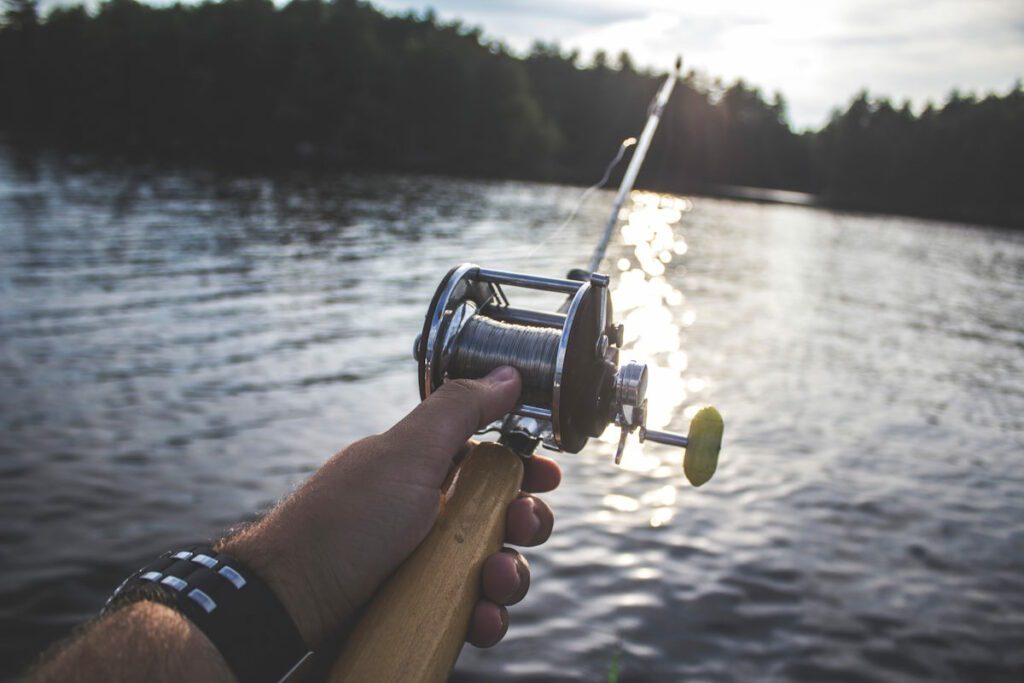
Nestled in Vilas County, Trout Lake offers a captivating fishing experience for walleye enthusiasts. Spanning approximately 6 square miles, this scenic lake boasts diverse fish populations, with walleye listed as a common species according to the Wisconsin Department of Natural Resources (DNR).
With a maximum depth of 117 feet and an average depth of 49 feet, Trout Lake provides a varied and dynamic underwater environment that supports a healthy walleye population. The lake’s depth variations create suitable habitats for walleye to thrive, offering ample opportunities for anglers to target this prized species.
Trout Lake’s reputation as a walleye fishery attracts anglers seeking a rewarding fishing experience. Whether you’re casting your line from a boat or enjoying the shoreline, the lake’s picturesque setting enhances the overall ambiance of your fishing adventure.
Anglers venturing onto Trout Lake in pursuit of walleye can employ a range of fishing techniques to optimize their success. From trolling along submerged structures to casting near weed beds, there are various strategies to entice walleye to strike. Experimenting with different lures, bait presentations, and fishing depths can enhance your chances of landing a prized walleye catch.
Trout Lake’s size and location in Vilas County make it an appealing destination for fishing enthusiasts. The surrounding area offers a wealth of natural beauty and recreational activities, ensuring a well-rounded experience for visitors.
Whether you’re a seasoned angler in search of a walleye challenge or a nature enthusiast looking to immerse yourself in the serene surroundings, Trout Lake delivers an enticing fishing experience. With its common walleye population, scenic allure, and diverse fishing opportunities, Trout Lake in Vilas County beckons anglers to cast their lines and create unforgettable fishing memories.
Lake Eau Claire
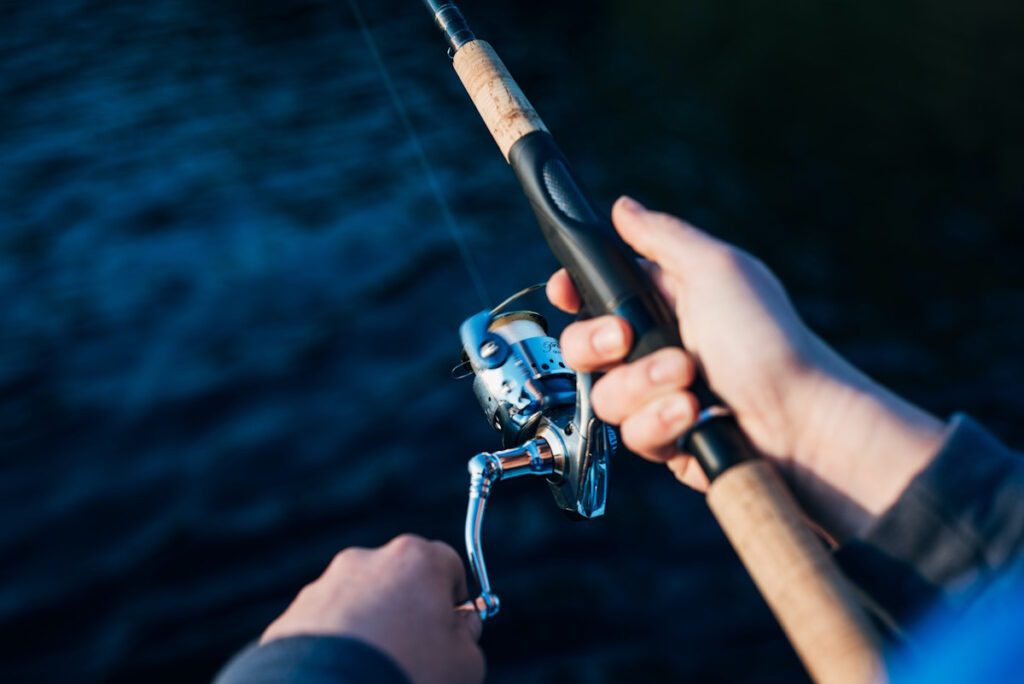
Eau Claire County’s Lake Eau Claire offers a hidden gem for walleye fishing enthusiasts. Despite being often overlooked due to its reputation as a prime panfishing destination, this picturesque lake boasts an above-average walleye population, with an estimated 4.3 adult walleye per acre.
Spanning approximately 4 square miles, Lake Eau Claire provides a compact yet rewarding fishing experience. With a maximum depth of 25 feet, the lake offers suitable habitats for walleye to thrive and flourish. Anglers can explore its diverse underwater structures, including weed beds, drop-offs, and submerged structures, to locate their target species.
While panfishing may be the primary pursuit on Lake Eau Claire, walleye fishing opportunities should not be overlooked. Anglers who venture beyond the popular panfishing spots can find success in targeting walleye, making for a pleasantly surprising angling experience.
The key to a successful walleye outing on Lake Eau Claire lies in understanding the lake’s dynamics and adapting fishing techniques accordingly. Trolling along drop-offs, casting near underwater structures, or vertically jigging can all prove effective in enticing walleye to bite. Being attentive to seasonal patterns and adjusting bait presentation can further increase your chances of landing a prized walleye catch.
The compact size and picturesque surroundings of Lake Eau Claire create a peaceful and serene atmosphere for anglers. The tranquil beauty of the lake, coupled with its walleye potential, make it an enticing destination for those seeking a memorable fishing adventure.
Whether you’re a passionate walleye angler looking for a lesser-known hotspot or simply enjoy the serenity of a smaller lake, Lake Eau Claire offers a unique opportunity to pursue walleye amidst the scenic landscapes of Eau Claire County. Embrace the hidden treasure of this lake and create unforgettable fishing memories in this overlooked but promising walleye fishery.
Lake Dubay

Located in Marathon and Portage Counties, Lake Dubay is a hidden gem for walleye fishing enthusiasts. This hydroelectric reservoir spans approximately 10 square miles and offers a diverse fishing experience, with walleye listed as abundant on the Wisconsin Department of Natural Resources (DNR) website.
Lake Dubay is known for its walleye population, particularly in larger sizes. Recent surveys conducted in 2022 revealed that the walleye in Lake Dubay ranked in the 75th percentile for size among all walleye populations in the state of Wisconsin. This is exciting news for anglers seeking trophy-sized walleye.
With a maximum depth of 30 feet, Lake Dubay presents a dynamic underwater landscape for anglers to explore. From submerged structures to drop-offs and weed beds, the lake offers diverse habitats where walleye can be found.
As a hydroelectric reservoir, Lake Dubay’s water levels can fluctuate due to power generation activities. Anglers should be mindful of these fluctuations and adjust their fishing strategies accordingly. Monitoring water levels and understanding the impact on walleye behavior can greatly improve fishing success.
Lake Dubay’s reputation as a walleye fishery attracts local anglers and visitors alike. Its abundant walleye population, coupled with the opportunity to target larger-sized fish, creates an exciting fishing experience for all skill levels.
Whether you prefer trolling along the lake’s edges, casting near submerged structures, or vertically jigging in deeper waters, Lake Dubay offers various techniques to entice walleye to bite. Experimenting with different lures, bait presentations, and fishing depths can help unlock the lake’s potential and maximize your chances of landing a prized walleye catch.
Beyond the thrill of the catch, Lake Dubay’s picturesque surroundings and serene ambiance add to the overall fishing experience. Take a moment to appreciate the natural beauty that surrounds you as you pursue walleye in this hidden gem.
For anglers seeking a memorable walleye fishing adventure, Lake Dubay in Marathon and Portage Counties offers a promising destination. With its abundant walleye population, larger-sized fish, and diverse underwater landscape, Lake Dubay invites anglers to cast their lines and immerse themselves in a rewarding fishing experience.
Western Arm of Lake Superior
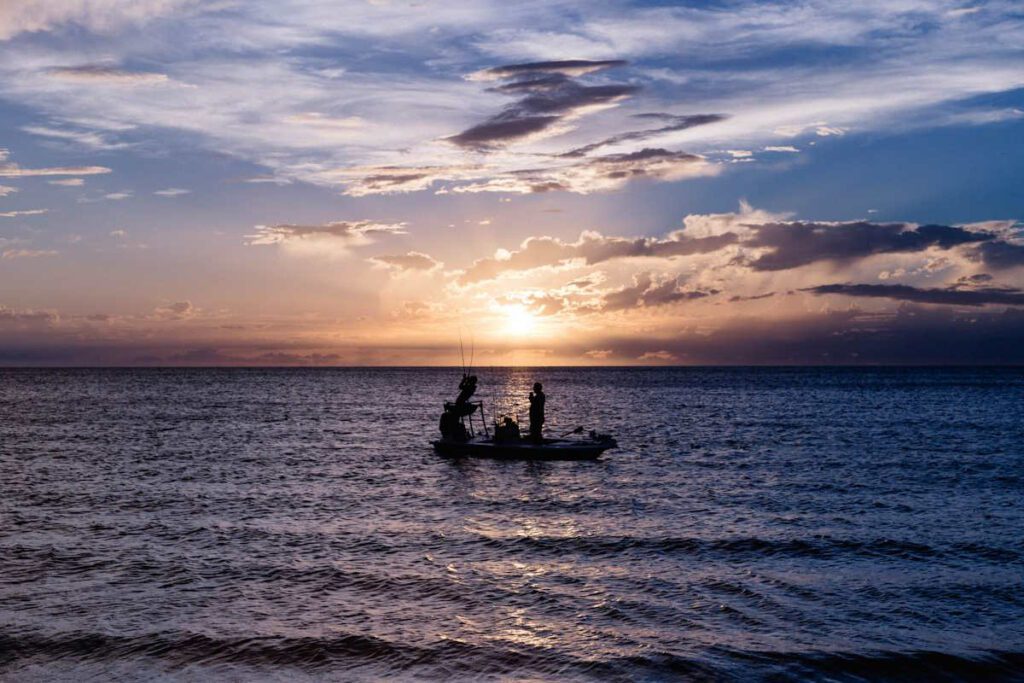
The Western Arm of Lake Superior, extending across Ashland, Bayfield, Iron, and Douglas counties, is a hidden gem for walleye fishing enthusiasts. What sets this region apart is its self-sustaining walleye population, largely derived from natural reproduction in the St. Louis River. This river serves as the primary source and the biggest stock of walleye in the entire Lake Superior basin.
Early in the season, when the ice thaws and conditions become favorable, anglers can target walleye in the St. Louis River itself. These freshwater predators are known to congregate in the river’s tributaries and shallower areas, eagerly seeking out baitfish and other prey. As the waters warm up and spring transitions into summer, walleye gradually migrate toward the deeper, cooler depths of Lake Superior.
Venturing into the vastness of Lake Superior offers an unparalleled angling experience. The beauty of this region lies not only in the thrill of hooking into walleye but also in the awe-inspiring scenery surrounding you. Majestic cliffs, pristine shores, and the vast expanse of the lake create a breathtaking backdrop for your fishing adventures.
With its unique blend of river and lake systems, the Western Arm of Lake Superior presents a remarkable opportunity to explore diverse fishing environments. Whether you prefer casting from the riverbanks or venturing out onto the open waters of Lake Superior, this region offers endless possibilities.
As you embark on your walleye fishing expedition, remember to equip yourself with the appropriate gear, familiarize yourself with local fishing regulations, and practice responsible angling. Keep an eye on the water conditions, study the seasonal patterns, and adjust your techniques accordingly to maximize your chances of landing that prized walleye.
Prepare to immerse yourself in the beauty and serenity of the Western Arm of Lake Superior, where the allure of walleye fishing awaits. Cast your lines, experience the thrill of the fight, and create memories that will last a lifetime in this unique and captivating part of Wisconsin.
Lake Namekagon
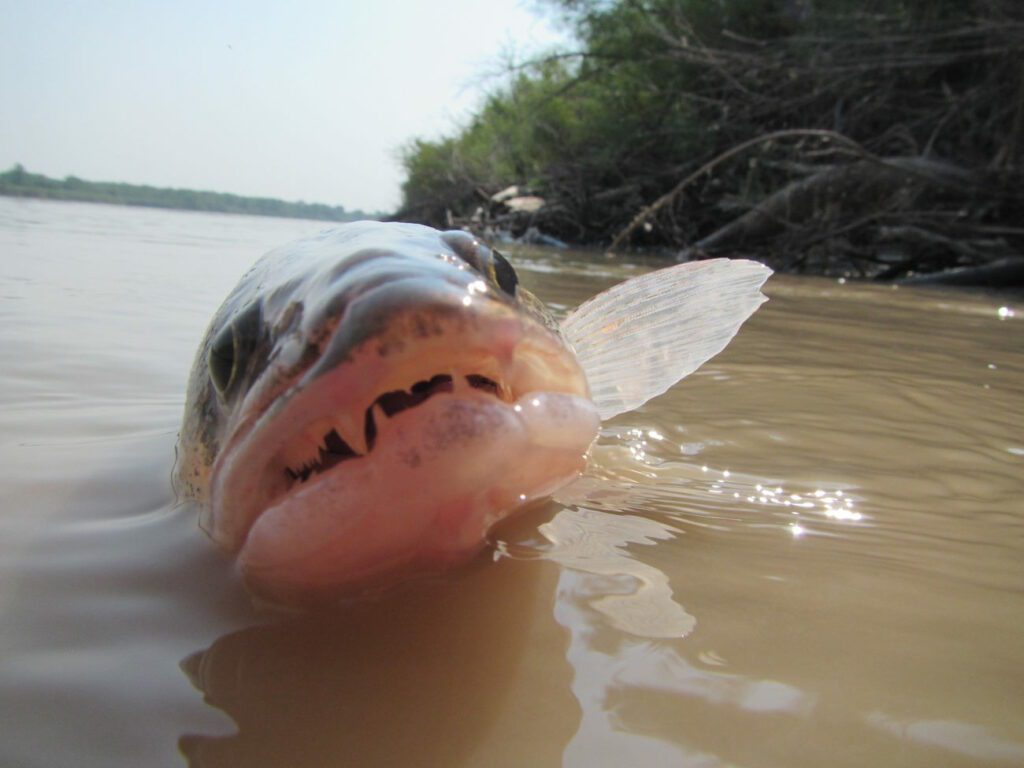
Nestled in Bayfield County, Lake Namekagon offers a promising walleye fishing experience in a picturesque setting. Spanning approximately 4.5 square miles, this lake has recently seen a notable increase in its adult walleye population.
A recent survey estimated that the adult walleye population on Lake Namekagon stands at an impressive 4.3 adults per acre, which represents a significant 50 percent increase compared to the population in 2017. This growth indicates a thriving and healthy walleye fishery, presenting exciting opportunities for anglers.
During the survey, it was observed that 30 percent of the handled walleye exceeded the 15-inch mark. This indicates the presence of larger-sized walleye in the lake, offering anglers a chance to hook into some impressive catches.
Lake Namekagon’s diverse underwater structures, such as weed beds, drop-offs, and submerged objects, provide suitable habitats for walleye to thrive. Anglers can explore these areas using various fishing techniques, including trolling, casting, or jigging, to entice walleye into biting.
Fishing on Lake Namekagon can be a rewarding experience, especially with the recent population increase. Anglers have the opportunity to reel in both numbers and quality-sized walleye, adding to the excitement and satisfaction of their fishing outings.
Beyond the walleye fishing, Lake Namekagon’s scenic beauty and tranquil ambiance make it an appealing destination for outdoor enthusiasts. Whether you’re casting your line from a boat or enjoying the shoreline, the serene surroundings of Lake Namekagon enhance the overall fishing experience.
For anglers seeking a thriving walleye fishery in Bayfield County, Lake Namekagon delivers on its promises. With the recent population increase, impressive size distribution, and picturesque backdrop, this lake invites anglers of all levels to indulge in a memorable walleye fishing adventure.
Wisconsin Walleye Fishing Tips
- Research the laws and regulations: Familiarize yourself with the statewide fishing regulations, as well as any specific rules or restrictions imposed by local authorities or the management of the particular body of water you plan to fish.
- Choose the right time: Walleye fishing can vary depending on the time of year. Pay attention to the seasonal patterns, such as spawning periods or feeding patterns, to increase your chances of success.
- Explore different depths: Walleye can be found at various depths throughout the day, so it’s important to experiment with different depths to locate their feeding zones. Start shallow and gradually move deeper if needed.
- Use live bait or artificial lures: Walleye are known to be opportunistic feeders. Consider using live bait options like minnows, leeches, or nightcrawlers, or try out artificial lures such as crankbaits, jigs, or soft plastics to entice their strikes.
- Focus on structure: Walleye are often found near underwater structures, such as rocky areas, drop-offs, submerged vegetation, or points. These structures provide cover and ambush points for walleye, so target these areas during your fishing trips.
- Pay attention to water clarity: In Wisconsin, water clarity can vary across different lakes and rivers. Adjust your fishing techniques and lure colors based on the water clarity to make your presentation more appealing to walleye.
- Experiment with different retrieval speeds: Sometimes, walleye prefer a slow and steady retrieve, while other times they may respond better to a more aggressive or erratic presentation. Vary your retrieval speed and observe how the walleye react.
- Be patient and persistent: Walleye can be elusive and require patience. Stay focused, pay attention to your surroundings, and keep trying different approaches until you find a successful method.
- Stay informed about weather conditions: Weather changes can affect walleye behavior. Keep an eye on weather forecasts, especially changes in barometric pressure, wind direction, and cloud cover, as these can impact the feeding activity of walleye.
- Stay safe and respect the environment: Prioritize your safety while enjoying your fishing adventure. Follow boating and water safety practices, wear appropriate gear, and be mindful of the environment by practicing catch-and-release when necessary.
Remember, walleye fishing is not only about catching fish but also about enjoying the overall experience and appreciating the natural beauty that Wisconsin’s lakes and rivers have to offer.
Frequently Asked Questions
The best time for walleye fishing in Wisconsin is typically during spring and fall when water temperatures are cooler. However, walleye can be caught year-round, and success may vary depending on the specific body of water and local conditions.
Popular techniques for walleye fishing in Wisconsin include jigging with live bait or artificial lures, trolling with crankbaits or spinner rigs, and casting with soft plastics or jerkbaits. Experimenting with different techniques and adjusting to the conditions can increase your chances of success.
Yes, there are size and creel limits for walleye fishing in Wisconsin. The regulations vary depending on the specific body of water and fishing zone. It is important to check the Wisconsin Department of Natural Resources (DNR) website or consult the fishing regulations guide for up-to-date information on size limits and daily bag limits.

This article was excellent! The information was very helpful & I appreciate gaining knowledge about lakes that I am unfamiliar with.
Hi, Jenise,
Thanks so much for the encouragement! Here’s to your success in pursuit of Wisconsin’s favorite gamefish: Walleye!